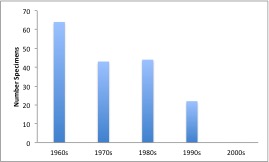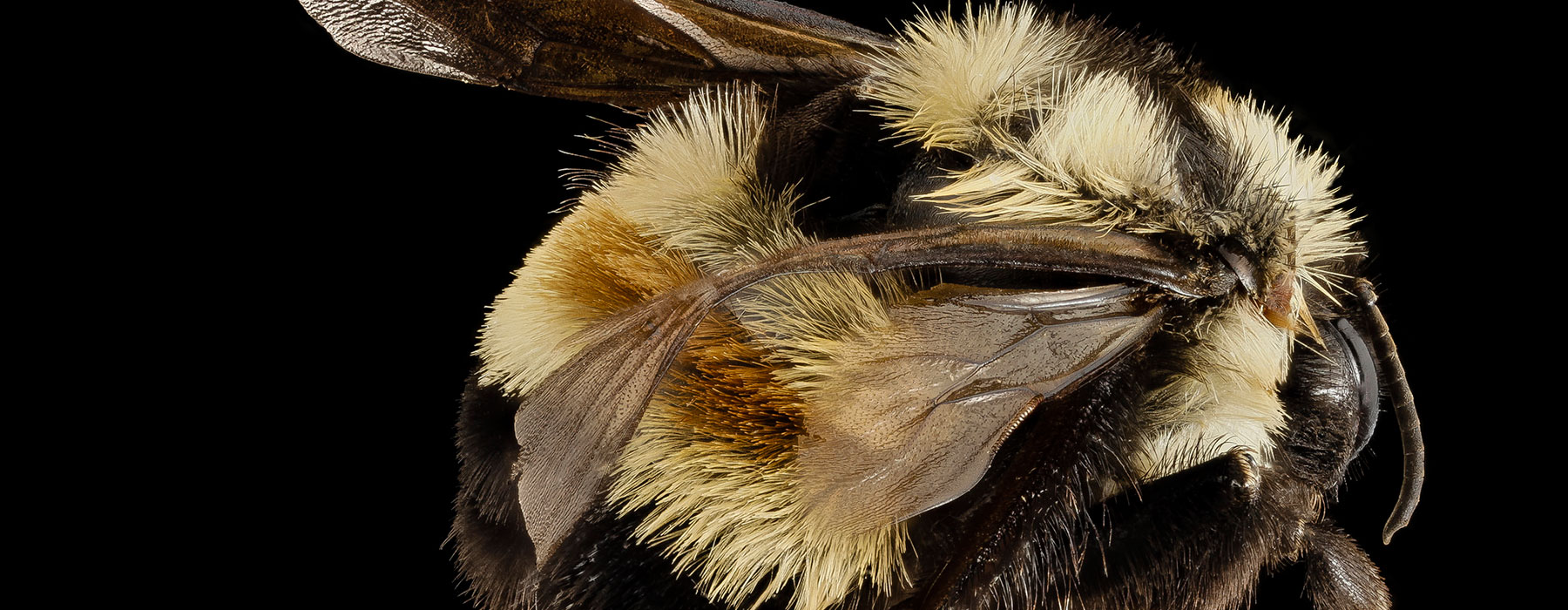Known historic locations. Biophysical regions depicted by black lines and counties by gray lines.
Formerly common throughout eastern North America, but populations crashed in late 1990’s. Apparently extirpated from Vermont since about 1999, but a few populations still known from the Midwest and Virginia. Queens emerge very early.
Historically, Rusty-patched Bumble Bees ranged from Minnesota east to Maine and as far south as Georgia. Recent surveys, however, show an extreme contraction of the species’ range with only isolated patches remaining in Midwestern and Northeastern states. It was last observed in Vermont in 1999.
Although the exact cause of this crash is uncertain, introduced parasites from imported colonies and pesticide use appear to be two major culprits. During the 1990s, to more successfully pollinate certain commercial crops, greenhouses across the United States began importing species of American bumblebees that had been reared in Europe. Having been exposed to foreign pathogens for which most native species had evolved no resistance, the imported bumble bees escaped the greenhouses and infected bees in surrounding areas. In addition, pesticides used to control other insect species also kill bumble bees. Even small amounts used on lawns and in gardens can negatively impact entire colonies.
Select food plants: Helianthus (Sunflowers), Asters, Solidago (Goldenrods), Lonicera (Honeysuckles), Vaccinium, Prunus, Aesculus. Occasionally robs nectar.
Tongue Length: short
Nest: underground
Parasitized by: B. ashtoni
Similar Species: B. citrinus, B. griseocollis, B. perplexus, B. vagans

The number of Rusty-patched Bumble Bees found by University of Vermont entomology students each decade.
General Phenology:
queens: April – October
workers: June – October
males: July – October
Extreme Vermont Dates:
queens: 1 May – 4 October
workers: 5 July – 10 October
males: 3 August – 23 October
Learn More:
Discover Life species page
Encyclopedia of Life species account
Xerces Society species account and pocket ID card
Reports:
McFarland, K.P., Richardson, L. and Zahendra, S. 2014. Rusty-patched Bumble Bee (Bombus affinis): Species Documentation Report to the Vermont Endangered Species Committee. Vermont Center for Ecostudies.DOI: 10.13140/RG.2.1.1305.9289 (PDF)







